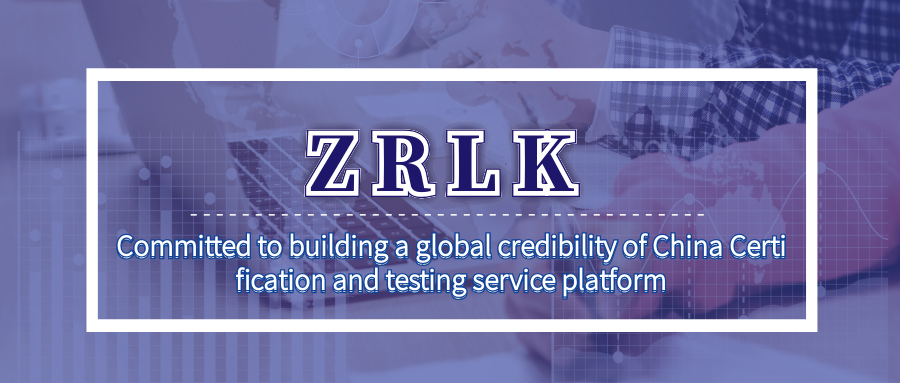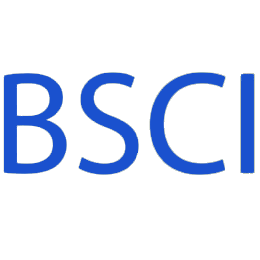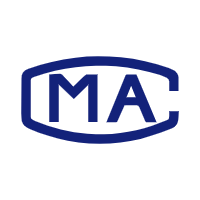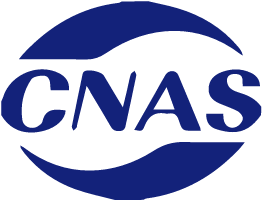
basic introduction
ITE Information Technology Equipment Information Technology Equipment The main function is to be able to enter, store, display, retrieve, transfer, process, exchange or control (or a combination of several functions) data and telecommunications messages. The device can be configured with one or more commonly used Terminal port for information transmission; its rated voltage does not exceed 600V.
Common ITE products
ITE includes data processing equipment, office equipment, electronic business equipment, telecommunications equipment, etc.
Such as: personal computers, laptops, tablets, mice, keyboards, monitors, all-in-ones, printers, projectors, routers, scanners, U disks, mobile hard drives, various computer peripherals and accessories.
EU CE certification
EU CE certification
Testing standards: E55022, EN55024, EN61000-3-2, EN61000-3-3
Electromagnetic compatibility directive: 2004/108 / EC
Test item EMI part:
Project | Frequency range | standard |
Power end conduction (CE) | 0.15~300MHz | EN55022 |
Telecommunications side conduction (ISN) | 0.15~300MHz | EN55022 |
Space Radio (RE) | 300Hz~66GHz | EN55022 |
If the highest frequency of the internal source of the product is lower than 106 / 0Hz, the measurement is carried out to 1GHz
If the highest frequency of the internal source of the product is between 1080 / 0Hz50000tz, then the quantity goes to 2GHz
If the highest frequency of the internal source of the product is between 5000Hz ~ 1GHz, the measurement is carried out to 5GHz
If the highest frequency of the internal source of the product is higher than 16Hz, the measurement is carried out to 5 times the highest frequency or 66Hz, whichever is less
Harmonic current
Standard | EN61000-3-2 |
Rated voltage range is AC220 ~ 240V | Products need to be tested in this project |
Rated power 75W and belo | Unlimited product requirements, no testing required |
Voltage fluctuation, flicker (Plicker)
Standard | EN61000-3-3 |
Rated voltage range is AC220 ~ 240V | Products need to be tested in this project |
Limit requirements: | Short-term flash value Pst≤1.0 Long-term flash P1t≤0.65 Relative steady-state voltage change dc≤3.3% Maximum corresponding voltage change nax≤4% |
The EMS part of the inspection project:
Electrostatic immunity (ESD)
Standard: EN55024 (reference to IEC61000-4-2); performance criterion: A
Contact discharge: ± 4kV: 25 times of each polarity at each discharge point
Air discharge: ± 8kV; 10 times of each polarity at each discharge point
Radiated immunity (RS)
Standard: EN55024 (reference to IEC61000-4-3); performance criterion: A
Frequency range: 80 ~ 100000Hz
Frequency range: 80 ~ 100000Hz
Electrical fast transient burst (EFT)
Standard: EN55024 (reference to IEC61000-4-4) Performance criterion: B
Test specifications:
AC power input: 1kV; repetition frequency 5kHz
DC power input: 0.5kV; repetition frequency 5kHz
Signal port and telecommunication port: 0.5kV; repetition frequency 5kHz
This test is not required for interface ports connected to data cables specified by the manufacturer with an expected length not exceeding 3m
Lightning strike immunity (Surge)
Standard EN55024 (reference IEC61000-4-5 ITU-T K20, K21, K22)
Performance criterion B
Test specifications:
AC input: 1.2 / 50 (8/20) combined wave; line-line: 1kV; line-ground: 2kV
DC input: 1.2 / 50 (8/20) combined wave; 0.5kV
Only applicable to ports that may be directly connected to outdoor cables according to manufacturer's specifications
Signal port and telecommunication port: 10/700 waveform; 1kV or 4kV
Only applicable to ports that may be directly connected to outdoor cables according to the manufacturer's specifications; if the port is provided with first-level protection as required, the test should be applied
4kV voltage to the set protector; otherwise, apply 1kV test voltage to the port without protector.
Conducted immunity (CS)
Power frequency magnetic field immunity (MS)
Voltage drop, short-term interruption immunity (Dips)
EMS performance criterion
Performance criterion A:
Without operator intervention, the equipment should be able to continue to work as expected. When the equipment is used as intended, no performance degradation or loss of function below the performance level specified by the manufacturer is allowed. The performance level can be replaced with an allowable performance reduction. If the manufacturer does not stipulate the minimum performance level and allowable performance reduction, it can be known from the product specification or technical documentation, and the user has reason to require the equipment used to meet this requirement.
Performance criterion B:
After the start of the test, without the need for operator intervention, the equipment should continue to work as expected. When the equipment is used as expected, after the harassment is applied, no performance degradation or loss of function below the manufacturer's specifications is allowed. The performance level can be replaced with an allowable performance reduction. During the test, performance degradation is allowed. However, after the test, the working state should not change and the stored data should not be lost. If the manufacturer does not stipulate the minimum performance level and allowable performance reduction, it can be known from the product specification or technical documentation, and the user has reason to require the equipment used to meet this requirement.
Performance criterion C:
The loss of function that can be recovered by itself or can be restored by the user according to the manufacturer's instructions is allowed.
Functions and / or information stored in non-volatile memory or protected by a backup battery should not be lost.
American FCC certification & Canadian IC certification
Certification form: FCC DOC
Test standard: FCC 47CFR Part 15B
Test items (only EMI part):
Item Frequency Range
Power end conduction (CE) 0.15 ~ 30MHz
Space radiation (RE) 30MHz ~ 40GHz
If the highest frequency of the internal source of the product is between 1.705 ~ 108MHz, the measurement is carried out to 1GHz
If the highest frequency of the internal source of the product is between 108MHz and 500MHz, the measurement is carried out to 2GHz
If the highest frequency of the internal source of the product is between 500MHz and 1GHz, the measurement is carried out to 5GHz
If the highest frequency of the internal source of the product is higher than 1GHz, the fifth harmonic of the highest frequency is measured 5 times or 40GHz, whichever is less
Canadian IC certification
Testing standard: ICES-003
Test items (only EMI part):
Item Frequency Range
Power end conduction (CE) 0.15 ~ 30MHz
Space radiation (RE) 30MHz ~ 40GHz
If the highest frequency of the internal source of the product is between 1.705 ~ 108MHz, the measurement is carried out to 1GHz
If the highest frequency of the internal source of the product is between 108MHz and 500MHz, the measurement is carried out to 2GHz
If the highest frequency of the internal source of the product is between 500MHz and 1GHz, the measurement is carried out to 5GHz
If the highest frequency of the internal source of the product is higher than 1GHz, the fifth harmonic of the highest frequency is measured 5 times or 40GHz, whichever is less
China CCC certification
Testing standards: GB9524, GB17625.1
Test items:
Item Frequency Range Standard
Power end conduction (CE) 0.15 ~ 30MHz GB9524
Telecommunications end conduction (ISN) 0.15 ~ 30MHz Gb9524 GB9524
Space radiation (RE) 30MHz ~ 6GHz GB9524
If the highest frequency of the internal source of the product is lower than 108MHz, the measurement is carried out to 1GHz
If the highest frequency of the internal source of the product is between 108MHz and 500MHz, the measurement is performed to 2GHz
If the highest frequency of the internal source of the product is between 500MHz and 1GHz, the measurement is performed to 5GHz
If the highest frequency of the internal source of the product is higher than 1GHz, the measurement is carried out to 5 times the highest frequency or 6GHz, whichever is less
Harmonic current
Standard: GB17625.1
Products with a rated voltage range of AC220 ~ 240V need to be tested in this project
Products with a rated power of 75W and below have unlimited values, no test required
Australian RCM certification
Testing standard: AS / NZSCISPR22
Test items (only EMI part):
Item Frequency Range
Power end conduction (CE) 0.15 ~ 30MHz
Telecommunications conduction (ISN) 0.15 ~ 30MHz
Space radiation (RE) 30MHz ~ 6GHz
If the highest frequency of the internal source of the product is lower than 108MHz, the measurement is carried out to 1GHz
If the highest frequency of the internal source of the product is between 108MHz and 500MHz, the measurement is carried out to 2GHz
If the highest frequency of the internal source of the product is between 500MHz and 1GHz, the measurement is carried out to 5GHz
If the highest frequency of the internal source of the product is higher than 1GHz, the measurement is carried out to 5 times the highest frequency or 6GHz, whichever is less
Japan VCCI certification
Detection standard: VCCI-V3
Test items (only EMI part):
Item Frequency Range
Power end conduction (CE) 0.15 ~ 30MHz
Telecommunications conduction (ISN) 0.15 ~ 30MHz
Space radiation (RE) 30MHz ~ 6GHz
If the highest frequency of the internal source of the product is lower than 108MHz, the measurement is carried out to 1GHz
If the highest frequency of the internal source of the product is between 108MHz and 500MHz, the measurement is carried out to 2GHz
If the highest frequency of the internal source of the product is between 500MHz and 1GHz, the measurement is carried out to 5GHz
If the highest frequency of the internal source of the product is higher than 1GHz, the measurement is carried out to 5 times the highest frequency or 6GHz, whichever is less
Korea KC certification
Detection standard: KN22, KN24
Test items (EMI part):
Item Frequency Range Standard
Power end conduction (CE) 0.15 ~ 30MHz KN22
Telecommunications end conduction (ISN) 0.15 ~ 30MHz KN22
Space radiation (RE) 30MHz ~ 6GHz KN22
If the highest frequency of the internal source of the product is lower than 108MHz, the measurement is carried out to 1GHz
If the highest frequency of the internal source of the product is between 108MHz and 500MHz, the measurement is carried out to 2GHz
If the highest frequency of the internal source of the product is between 500MHz and 1GHz, the measurement is carried out to 5GHz
If the highest frequency of the internal source of the product is higher than 1GHz, the measurement is carried out to 5 times the highest frequency or 6GHz, whichever is less
Taiwan BSMI certification
Detection standard: CNS13438
Test items (only EMI part):
Item Frequency Range
Power end conduction (CE) 0.15 ~ 30MHz
Telecommunications conduction (ISN) 0.15 ~ 30MHz
Space radiation (RE) 30MHz ~ 6GHz
If the highest frequency of the internal source of the product is lower than 108MHz, the measurement is carried out to 1GHz
If the highest frequency of the internal source of the product is between 108MHz and 500MHz, the measurement is carried out to 2GHz
If the highest frequency of the internal source of the product is between 500MHz and 1GHz, the measurement is carried out to 5GHz
If the highest frequency of the internal source of the product is higher than 1GHz, the measurement is carried out to 5 times the highest frequency or 6GHz, whichever is less


BSCI certification is an abbreviation of BusinessSocialComplianceInitiative, and Chinese is called business social standard certification. BSCI is an organization that advocates the business community to abide by social responsibility. At the same time, it is a non-profit organization.

CMA, the name is \"China Metrology Accreditation\", the abbreviation of \"China Metrology Accreditation\" in English. According to the provisions of Article 22 of the Metrology Law of the People’s Republic of China: “The product quality inspection agency that provides notarized data to the society must be evaluated by the metrological administrative department of the people’s government at or above the provincial level for the capability and reliability of metrological verification and testing. Qualified.\"

Laboratory accreditation is a third-party certification that CNAS has the ability to perform specific testing and calibration work for testing and calibration laboratories.
ITE Information Technology Equipment Information Technology Equipment The main function is to be able to enter, store, display, retrieve, transfer, process, exchange or control (or a combination of several functions) data and telecommunications messages.
Get a quote